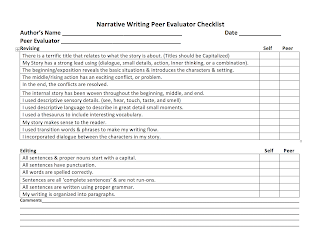Good Morning 6th Graders,
Happy Halloween! Today is a 'D' Day. Due to the half day dismissal we will not be going to blocks today. I want you to have fun, but make sure you are also well behaved.
Thank you
Mr. Trumble
ELA:
Do Now:
Standards:
Happy Halloween! Today is a 'D' Day. Due to the half day dismissal we will not be going to blocks today. I want you to have fun, but make sure you are also well behaved.
Thank you
Mr. Trumble
ELA:
Do Now:
- Place any treats that you brought on the back table
- Put on your Halloween costume
Homework:
- If your illustration is not done, FINISH IT!!!!
- Use Card Stock & Design the Cover to our Anthology (Optional- only get a piece of Card Stock if you are serious about designing a cover)
Anthology of
Personal Narratives
2018
Writers Workshop Session #11
Standards:
- W6.3 - Write narratives to develop real or imagined experiences or events using effective technique, relevant descriptive details, and a well structured sequence of events
- W6.4 - Produce clear and coherent writing in which the development, organization, and style are appropriate to task, purpose, and audience
- W6.5 -With guidance and support from peers & adults develop and strengthen writing as needed by planning, revising, editing, rewriting, and trying a new approach.
Publication Day:
1. You must show me your handwritten copy of your narrative. Then...

1. You must show me your handwritten copy of your narrative. Then...
- Open a Microsoft word document
- Begin by changing the font size to 14
- Type your heading
- Assignment = Personal Narrative
- Skip a line after your heading and give your story a title. DO NOT center your title by using the space bar. I will show you all how to center the title later.
- Skip a line after your title and begin typing the beginning of your story. Be sure to indent. To indent - Hit the 'tab' key
- The only time you should use the 'return' key or the 'enter' key is at the end of a paragraph. If you are not at the end of a paragraph, just keep typing. They computer will automatically drop down to the next line when you run out of room.
- It is expected that you will type with both hands, and you should try to use more than just your two index fingers. Typing is an essential skill that you need to develop. If you type with one hand or just your two index fingers you will never be able to become a fast typer.
- Do not worry about spelling errors or typos. It will slow you down if you stop at each error. You can go back and fix those later.
- Be sure to indent each new paragraph.
- Use quotation marks whenever you use dialogue
- Continue working until your entire narrative is typed. When you are done proofread your writing and fix any typos and spelling errors.
1. If you finish you will print one copy of you narrative writing.
2. You will then have one last opportunity to evaluate your writing and get feedback before final publication.
3. You will use the narrative writing checklist and the checklist in your ELA journal to make final improvements.
4. Once it is ready for publication I want you to copy and paste your narrative to kidblog. Title your entry "My Personal Narrative"
5. Last, work on your full color, detailed illustration











